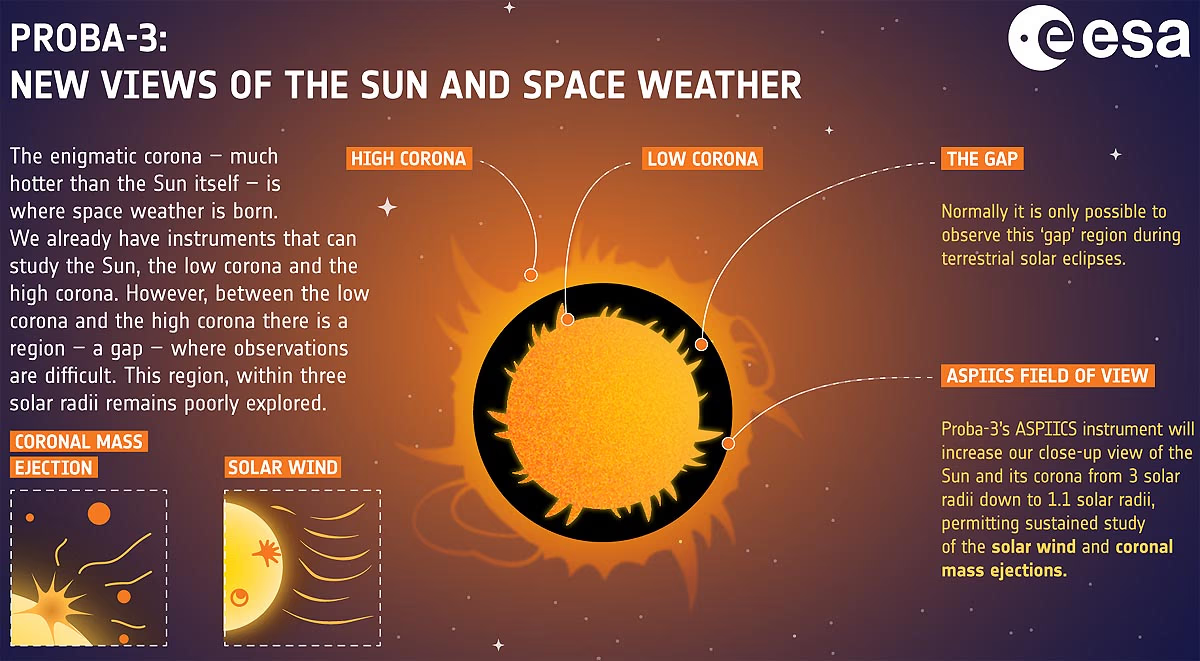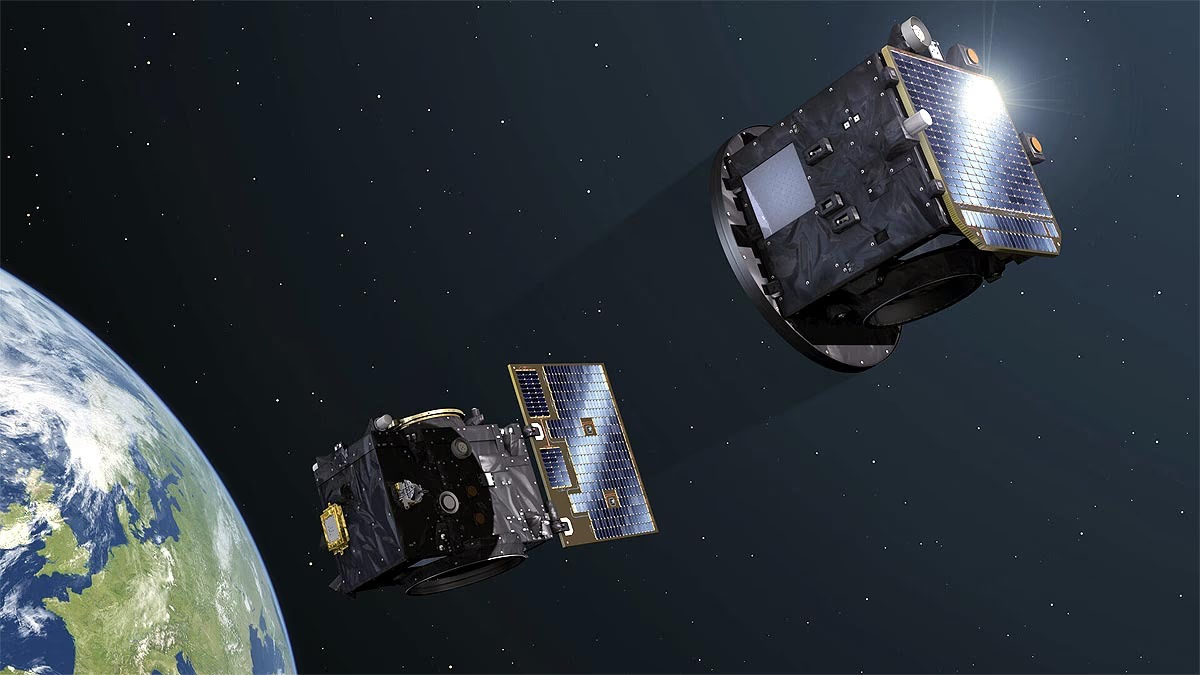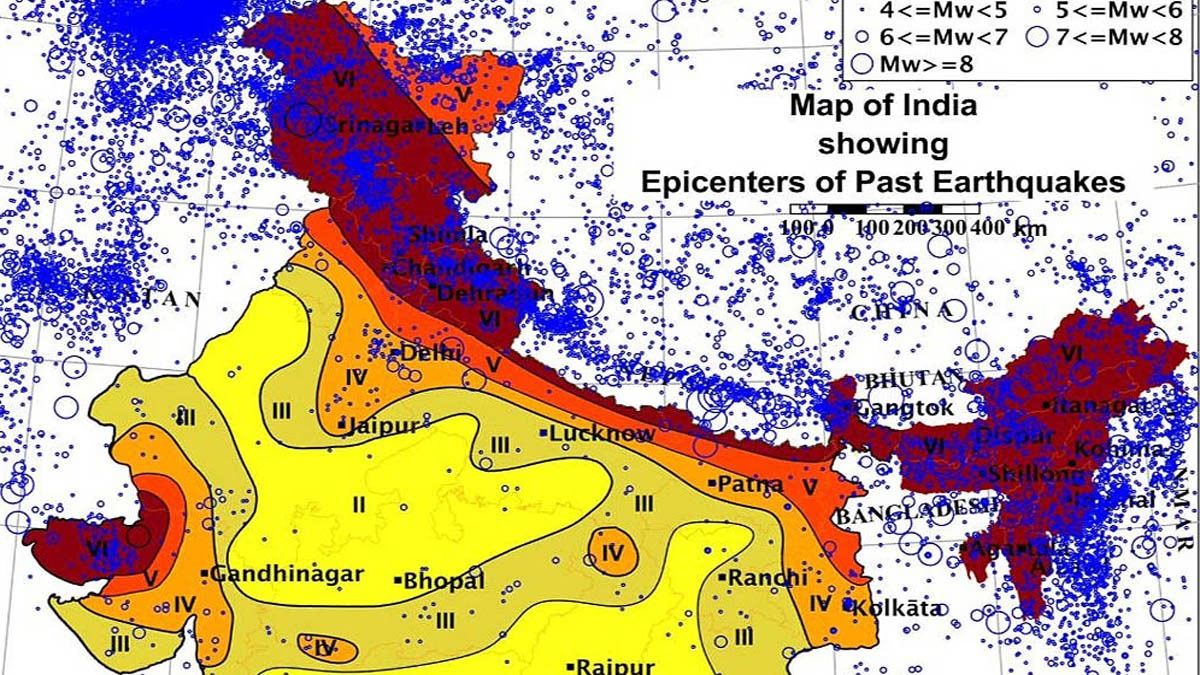The Indian Space Research Organisation (ISRO) is poised to launch the European Space Agency's (ESA) Proba-03 satellite aboard its PSLV-XL rocket at exactly four minutes past four in the afternoon on December 4, 2024. This satellite will orbit the Earth in an elliptical trajectory ranging from 600 to 60,500 kilometers.
The primary aim of this satellite mission is to study the Sun's corona and to showcase new technology for launching multiple satellites simultaneously. The Proba-03 satellite will explore the atmospheric layers around the Sun, particularly the vast yet faint layer that can't be observed with the naked eye, offering crucial insights.

Source: aajtak
In the image above, a black ring can be seen around the Sun. The Proba-03 mission will investigate this area. Essentially, there are two types of coronas—high and low—currently being studied by multiple satellites. Proba-03 will focus on the gap, the black region, between these coronas. Equipped with the ASPIICS instrument, it will make studying this gap easier and also provide data on solar winds and coronal mass ejections.
By analyzing this satellite data, scientists will gain insight into space weather and solar winds, understanding the Sun's dynamics and its effects on Earth. The satellite comprises two key parts: the occulter and the coronagraph spacecraft. Each plays a distinct role, yet they work in synchronization.




